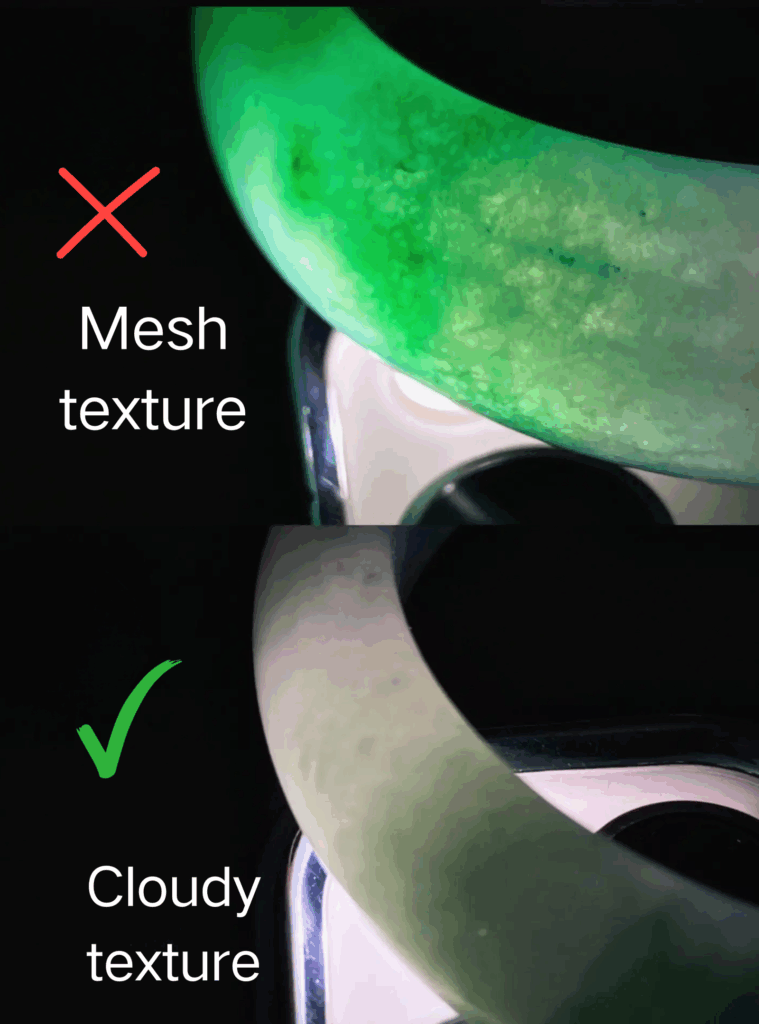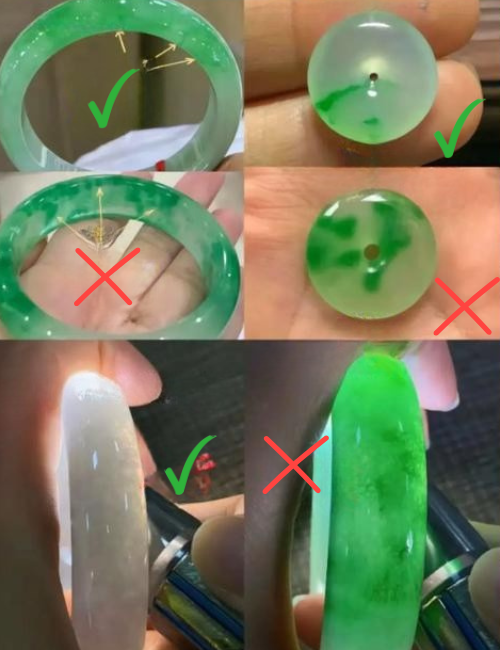1、Light transmission observation method
Operation:
Mobile phone flash closely attached to jade and shining (light off environment)
Real jade: light is soft and diffused, visible cloud flocculent structure (such as Hotan Jade) or color root extension (such as jadeite)
Fake jade: excessively transparent (glass like) or cloudy (adhesive jade), common bubbles
Key points of illustration:
True jade has a halo like the moon’s halo, while fake jade transmits light like a light bulb

2、Temperature tactile test
Operation:
Hold the jade and let it sit for 2 minutes
True jade: Continuously cool (slow thermal conductivity)
Fake Jade: Quickly heats up to body temperature (plastic/glass conducts heat quickly)
Mnemonic:
Summer holds ice, winter warms hands – counterfeit goods are immediately exposed!
3、Ribbon and impurity inspection
Operation:
Rotate the jade under natural light and observe the color distribution
True jade: color gradient like blending (such as jadeite color roots), containing natural flaws such as cotton wool/ice cracking
Fake jade: The color is rigid and uniform, or there is pigment accumulation in the cracks (fading when wiped with alcohol)
Illustration skills:
Colored jade cracks have a darker color, while natural jade cracks have a lighter color

4、Simple hardness test
Operation:
Use jade edges to scratch glass (such as cups)
True jade: glass marks, jade without damage (hardness ≥ 6.5)
Fake jade: worn jade or glass without marks (low hardness)
Attention:
Choose a concealed location for testing to avoid damaging jewelry